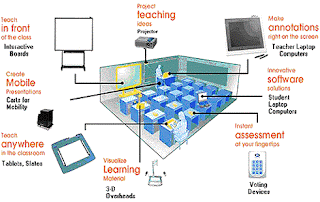Firstly, my name is Brittany Barber and I am a fourth-year Secondary Education student at Deakin University. In undertaking the unit, ‘Teaching with new technologies’ – I am to explore the usage of new technologies within the classroom, which I have chosen to do through the means of a blog.
The use of ICT in the classroom is ever-changing – and as future teachers we have a responsibility to our students, fellow staff and profession as a whole to be familiar with its use within classrooms and curriculums – and the implications that stem from its inclusion.
The use of ICT can be reflected upon in terms of the trends in, the policies on and the rationales given in the use of new technologies in the classroom – which I will identify within this blog. What are also important in considering ICT in education are the possible future directions of ICT within classrooms and the curriculum.
Identifying the stakeholders and their interests with regard to ICT is also highly important, as all must be considered in their context when implementing ICT within the classroom.
It is also important to identify the future of new technologies in teaching and learning - as we must be prepared for the future generations and the technologies that will be a large part of their everyday lives.
It is also important to identify the future of new technologies in teaching and learning - as we must be prepared for the future generations and the technologies that will be a large part of their everyday lives.
I’m looking forward to creating this blog as a means of exploring the implications of the use of new technology within the classroom. The style of the blog will include a title, body of text, and related pictures or videos – as well as a final summary of references that I have used throughout. I encourage you to post comments with questions, opinions or further thoughts – so the capabilities of the blog are used to their best effect. I will also try to include links to articles, or websites of interest and relevance to the topic of the post.








